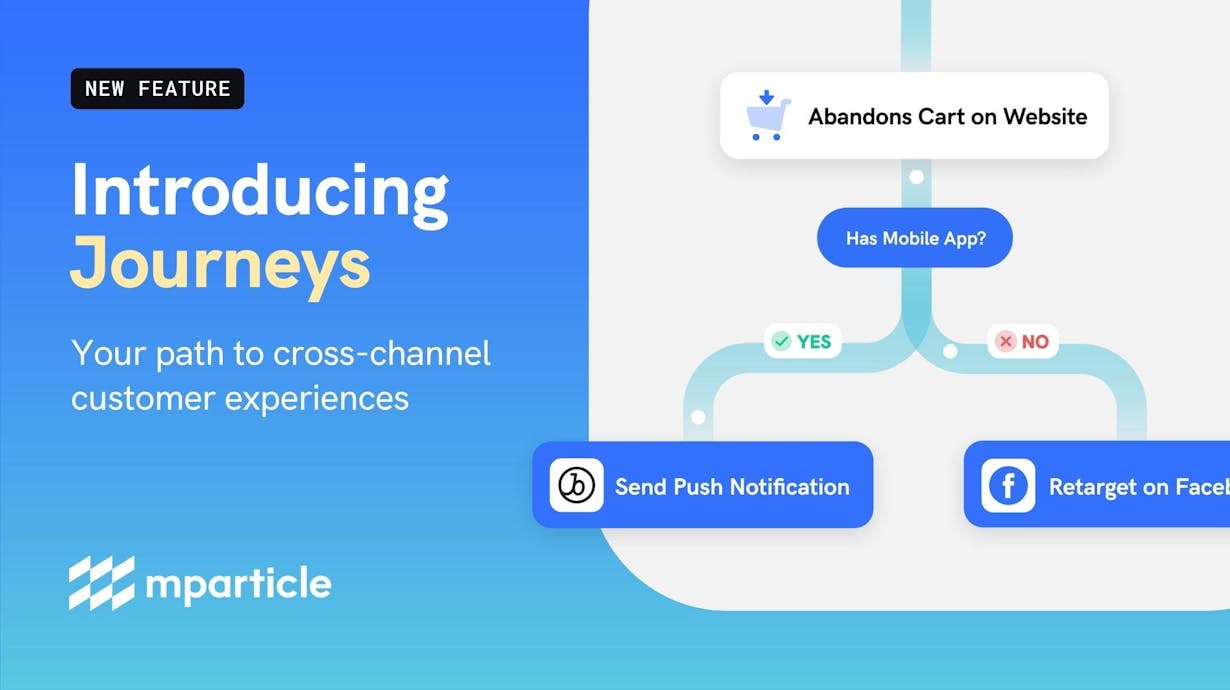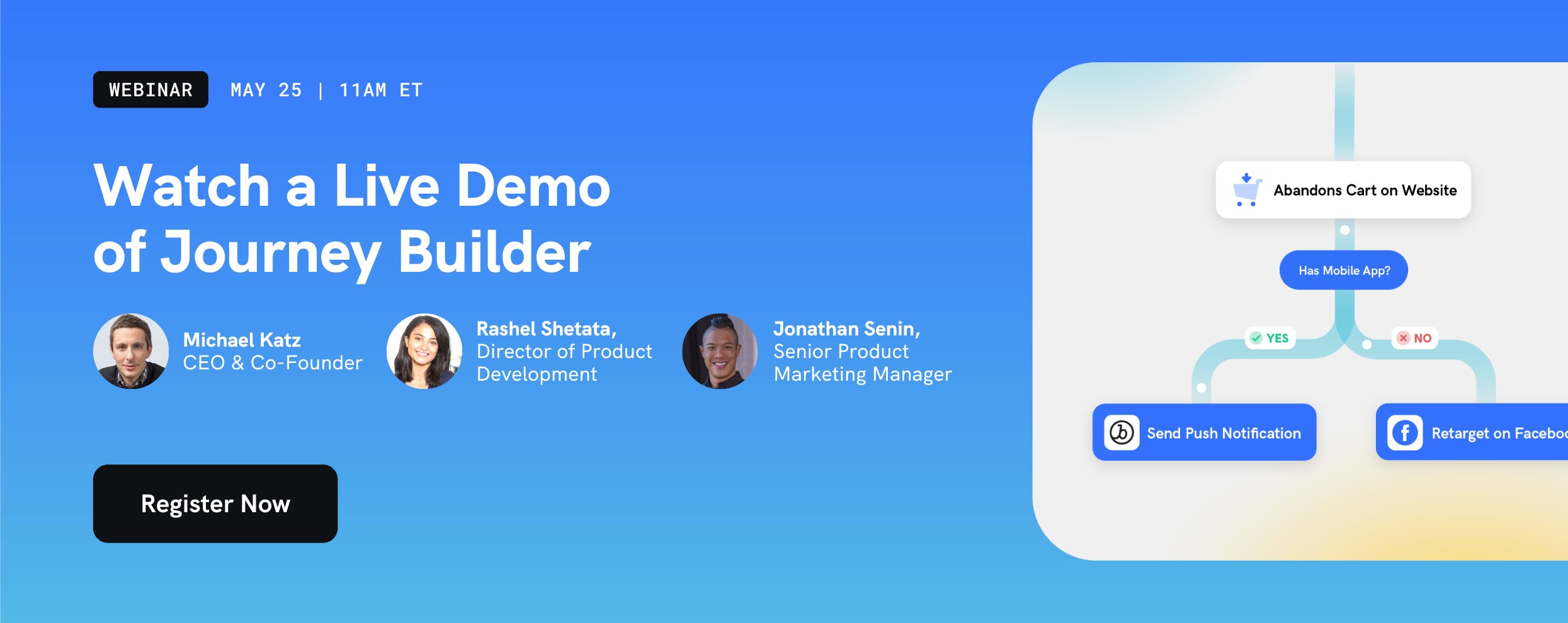Introducing Journeys: A new workflow to continuously optimize each step of the customer journey
Our newest release combines multi-path journey analysis, testing, and orchestration into a single workflow, and helps brands deliver complete, cohesive, and personalized customer journeys on an individual level.

Delivering personalized experiences for your customers that speak to their unique needs and interests is a challenge. Connecting these individual experiences into cohesive journeys across platforms and milestones that target customers on an individual level is even harder.
The biggest obstacle preventing brands from achieving this outcome is not access to data––it is silos around teams, data, and processes that are an all but inevitable result of scale. Even when teams have exceptional insight into customer behavior on the channels for which they are responsible, this alone does not mean that individual customers will experience connected and personalized interactions across disparate platforms, and throughout the entire customer journey.
A marketing team, for instance, may focus on converting prospects into customers primarily through growth channels like social networks, and use those platforms’ native analytics and engagement tools to do so. A CRM team might use an email platform like Braze to target existing customers and drive higher lifetime value. Meanwhile, the product team is focused on optimizing in-app user journeys, and identifying any roadblocks that may be preventing sign ups, purchases, and other flows.
While each of these individual teams might be doing a great job delivering personalized experiences within individual pieces of the customer journey, these experiences are not unified into one complete journey that is tailored to one individual customer. This is because gaps between these teams, and the systems and processes they use to execute on their objectives, make it difficult to connect knowledge in a way that allows for translating individual customer milestones into complete, cohesive, personalized journeys.
Additionally, because these customer insights are fragmented, it is also difficult to determine the impact of a single touchpoint on the overall customer experience. Without seeing how an engagement in one channel impacts all the others, it is difficult to define what constitutes an “ideal” customer journey, which further compounds the challenge of delivering cross-channel continuity to individual customers.
Journeys: Powerful tools for connecting and optimizing customer experiences
mParticle has released Journeys to help teams address this challenge of building cohesive and personalized customer experiences across channels and lifecycle stages. Journeys is set of related tools and features that gives brands a way to understand, deliver, and continuously optimize journeys across a customer’s lifetime, and target key moments in a journey, like a first purchase or reaching a new loyalty status, and control how, when, and where to engage customers at each of these key moments.
Included within Journeys are three interrelated features:
- Journey Analytics: Powered by Indicative, this feature delivers improved customer context through rich reporting capabilities focusing on multi-path journey analysis.
- Journey Builder: This is the visual interface that teams can use to build and orchestrate experiences across channels, and use cross-channel behavioral, event, or user data to define key milestones and sequences within the customer journey.
- Journey Integrations: mParticle’s Audience Connections with partners including Meta, Twitter, Braze, Salesforce Marketing Cloud, Google and hundreds more allows teams to continuously sync audiences with these platforms in real time, and deliver the last-mile ads, messaging, and media experiences.
Because these integrations are bi-directional, teams can close the loop on performance by incorporating cross-channel engagement metrics such as email opens and clicks, SMS responses, and attribution data back into mParticle, and develop a virtuous cycle between key processes including:
Discovery: Here, teams leverage Journey Analytics to discover optimal paths to conversion for their customers.
Mapping: Armed with insights from the discovery phase, brands can employJourney Builder to map out detailed journey paths that unify separate platforms and interactions on the level of individual customers.
Activation: Using Journey Integrations, brands can reach customers across any channel: email, mobile, or social.
Optimization: Once personalized journeys are in flight, teams can see the full pictures of how each channel and interaction is impacting all other journey milestones, and understand the impact that each channel and interaction is having.
With a continuously updating user profile view, brands can easily optimize the journey’s sequence and maximize ROI across engagement channels.
Streamline your website integrations
Learn which third-party integrations you could replace with a single SDK by adopting mParticle.

Customer targeting to mirror customer behavior
Unique to this approach to personalization is the sequential nature of targeting customers and delivering personalized experiences. Targeting customers who perform X, Y, or Z actions is fairly straightforward using modern marketing technologies. What’s more challenging (and more rewarding in the long run) is targeting customers who perform X, then Y, then Z, and delivering personalized experiences at each stage that are informed by the actions that came before it.
Targeting customers in this manner is much more reflective of how consumers behave today. Consider how you interacted with the last major brand that engaged with you: Maybe you opened a push notification, installed the company’s app, closed the app and forgot about the company for a month, received and read one of their emails, visited the online store and added something to your cart, then closed the tab without completing the order. These behaviors don’t happen in isolation; they’re part of a continuous stream of engagement that a brand can more carefully control with Journey Builder.
Rashel Shehata, Director, Product Management at mParticle, describes what mParticle Journeys is and how it allows brands to create customer targeting that mirrors customer behavior.
Maximizing marketing ROI
Journeys ultimately helps teams make the most of the data and tools at their disposal, and turn these resources into something greater than the sum of their parts. By taking a next-generation approach to journey analysis, testing, and orchestration, teams can maximize the overall impact of the time, money, and effort spent on understanding and engaging with their customers. Optimizing these efforts is all too critical in today’s marketing ecosystem, in which market sea changes are forcing teams to continue to drive growth in the face of increasing customer acquisition costs, and shifting economic conditions.
“Journeys makes it simple for marketers to do more with less,” says mParticle CEO Michael Katz, “maximizing the impact of each customer interaction.”



